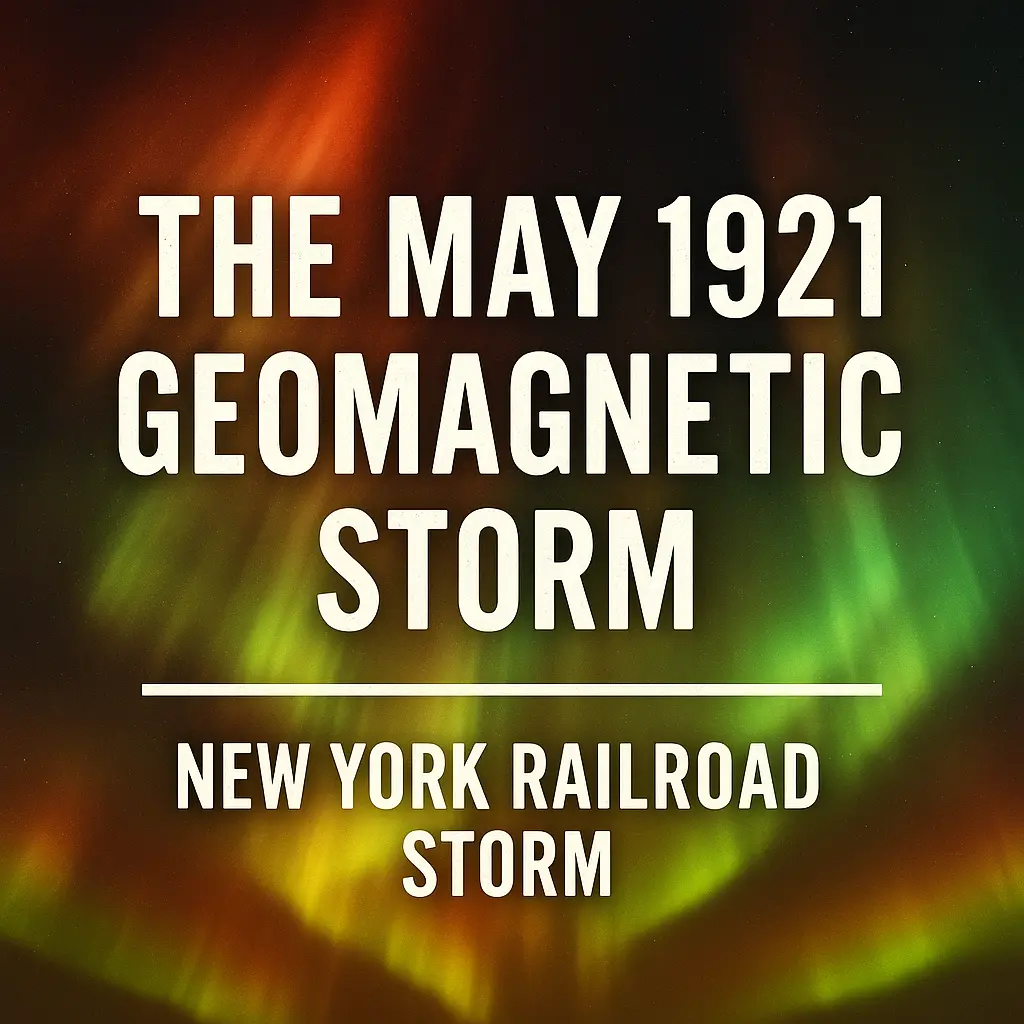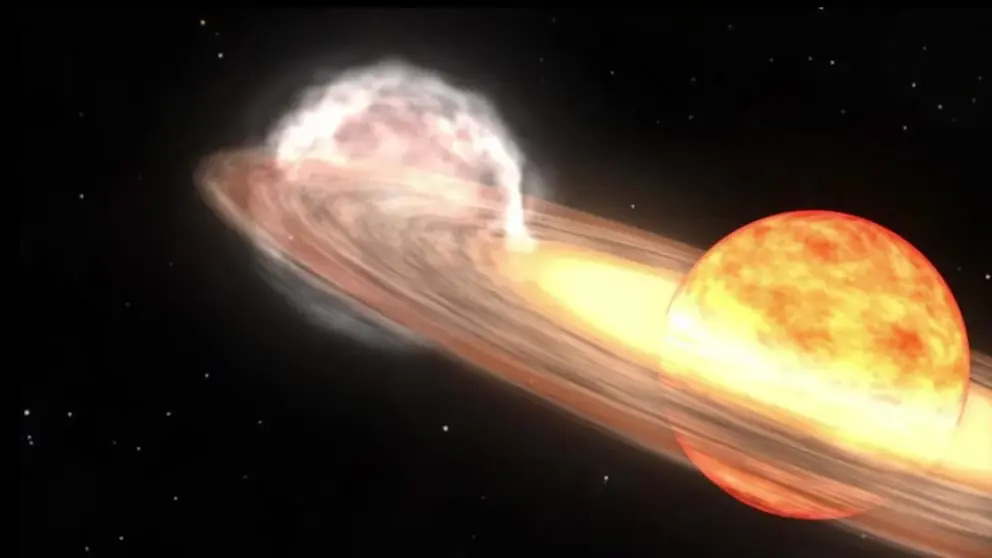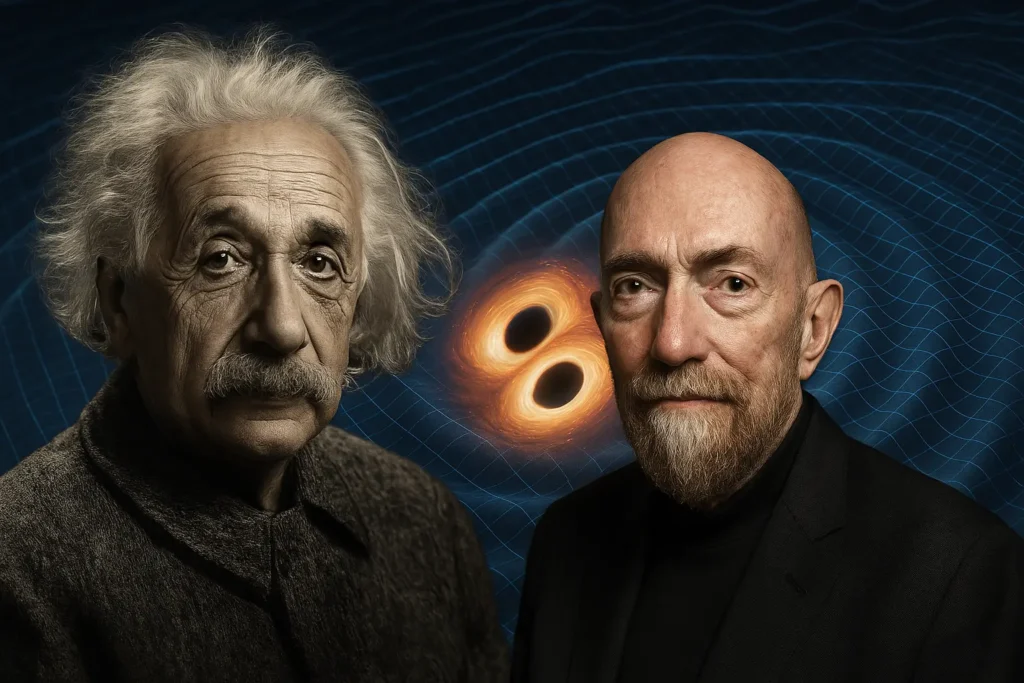Also Known As: “The New York Railroad Storm”
In May 1921, a massive geomagnetic storm struck Earth, triggering widespread disruptions across telegraph systems, railroads, and communication infrastructure. Although often overshadowed by the more famous Carrington Event of 1859, the May 1921 Geomagnetic Storm remains one of the most powerful space weather events in recorded history. Today, with our deep reliance on digital systems, this historical storm serves as a stark warning of the Sun’s potential to disrupt modern life.
Background: A Surge from the Sun
On May 13, 1921, Earth was struck by a powerful coronal mass ejection (CME) following a significant solar flare. As the charged particles interacted with Earth’s magnetosphere, they triggered intense geomagnetic activity, pushing auroras far beyond their usual polar boundaries and inducing electrical currents across vast areas of infrastructure.
This event occurred during Solar Cycle 15, a period of heightened solar activity. The resulting geomagnetic disturbance is estimated to have reached Dst values between -850 and -900 nanoteslas, placing it among the top two or three events ever recorded in terms of intensity.
Impacts on Technology and Infrastructure
Telegraph and Telephone Systems
The most immediate impact was felt in telegraph lines, which acted as long conductive pathways for the storm-induced geomagnetic currents. These currents overwhelmed systems designed for low-voltage communication:
- Telegraph and telephone exchanges experienced overloads.
- Several telegraph offices in the U.S. reported equipment damage and fires.
- Operators witnessed paper spontaneously igniting in some cases due to heat from electrical surges.
Railroad Disruptions
The storm earned the nickname “New York Railroad Storm” after a fire broke out at the New York Central Railroad signal station on 57th Street. The blaze was attributed to excessive currents generated in the signal control equipment. Railroads across the northeastern United States experienced:
- Signal system failures
- Equipment malfunctions
- Delays in train operations
These effects represented one of the earliest documented instances of space weather disrupting transportation infrastructure.
Widespread Auroras
One of the most visible consequences was the appearance of spectacular auroras far from their normal latitudes. Reports described red and green auroral displays visible in:
- New York
- California
- Texas
- Puerto Rico
- Parts of Western Europe
In some cases, the auroras were so bright they were mistaken for fires on the horizon.
Comparison to the Carrington Event
While the Carrington Event of 1859 is widely regarded as the most intense geomagnetic storm on record, the May 1921 storm is often considered its closest rival. Unlike in 1859, however, early 20th-century infrastructure—especially the increasing use of electric communication and control systems—was significantly more vulnerable.
| Feature | Carrington Event (1859) | May 1921 Storm |
| Estimated Dst | ~ -850 to -1600 nT | ~ -850 to -900 nT |
| Affected Technologies | Telegraph | Telegraph, Telephone, Railroad |
| Fires Reported | Telegraph stations | NYC railroad signal station |
| Aurora Range | Caribbean, Hawaii | Texas, Puerto Rico |
| Infrastructure Impact | Moderate | Widespread and damaging |
Lessons for the Modern Age
If a storm of similar magnitude were to strike Earth today, the consequences would be far more severe. Vulnerabilities in satellites, aviation systems, GPS navigation, and power grids could lead to:
- Prolonged blackouts across continents
- Loss of satellite communication
- Economic disruptions running into trillions of dollars
The May 1921 storm is now used by NASA, NOAA, and emergency planners as a case study for worst-case space weather scenarios. Modern monitoring systems, such as the Solar and Heliospheric Observatory (SOHO) and Parker Solar Probe, aim to provide early warning of such events, but mitigation remains a critical challenge.
Conclusion
The May 1921 Geomagnetic Storm, though largely forgotten by the public, stands as a powerful reminder of Earth’s vulnerability to solar activity. As we continue to increase our dependence on interconnected digital infrastructure, understanding and preparing for extreme space weather is not just an academic exercise—it is a necessity.




Here you can explore a lot of useful information.
It is made to guide you with different topics.
You will find easy-to-read explanations and real examples.
The content is regularly refreshed to stay current.
https://comoedia.org
It’s a reliable resource for research.
All users can get value from the materials here.
Feel free to exploring the site right away.
Crash games are digital games with a interactive experience.
They feature a rising multiplier that players can track in real time.
The goal is to act before the bar stops.
cs2 crash
Such games are popular for their easy rules and thrill.
They are often used to improve reaction speed.
Plenty of platforms showcase crash games with unique designs and features.
You can explore these games today for a fun experience.